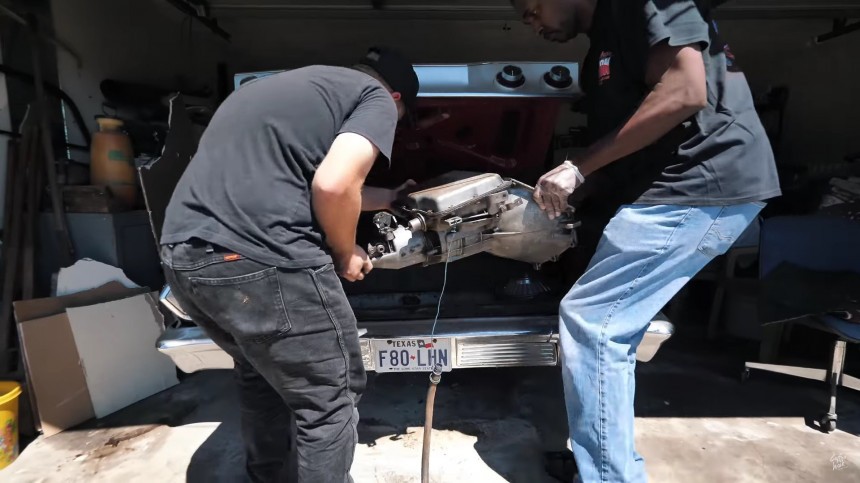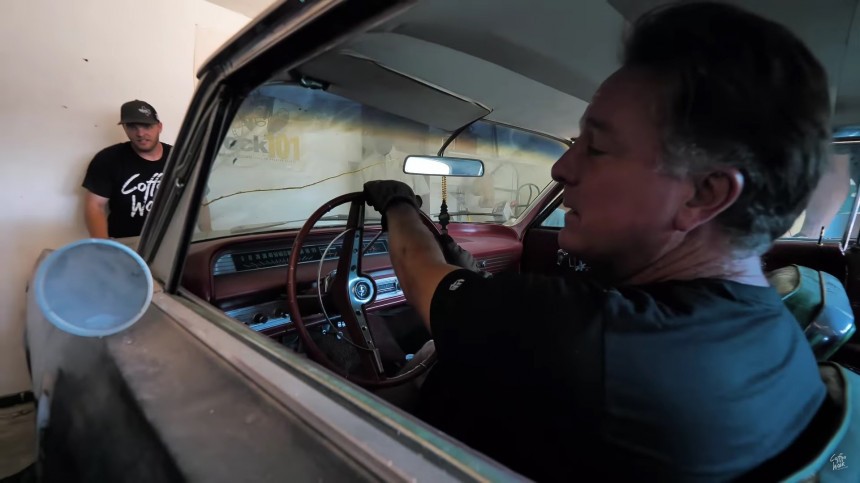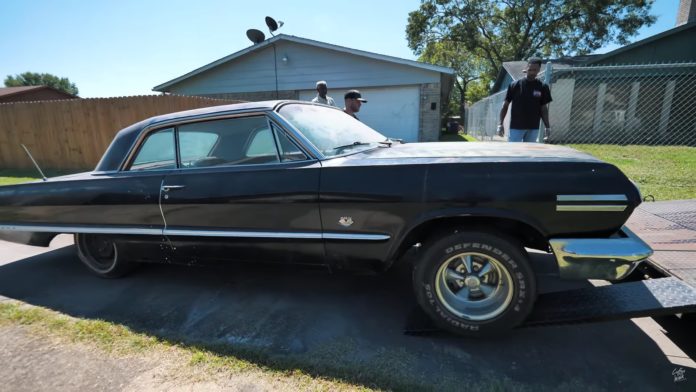1963 is a year rich in historical events for the USA. Martin Luther King had his dream, Alcatraz closed down for good, American people found themselves ZIP-coded, the Dodgers beat the Yankees in the World Series Final, the pushbutton phone came around, and LHO shot JFK in Dallas, Texas.
Photo: Dennis Collins/YouTube
The ’63 Impala here is an example from the model’s third generation, and it looks to be in solid condition throughout. Despite the enticing “409 V8” emblems on the front fenders, our Sport Coupe comes equipped with the more modest but very popular 283 ci (4.6-liter) small block V8. Back in the day, the engine in this car used to be connected to the rear axle with the aid of its two-speed automatic Powerglide gearbox.
I say “used to” because somewhere down the road from two decades ago and the present day, the owner (one of only two to have had possession of the vehicle during the nearly six-decades-long ownership) removed the transmission. That’s right, gearbox and driveshaft altogether, as a theft-protection measure.
(At this point, I tend to agree with one of the channel’s viewers who praised the owner’s dedication. How many people take out the entire transmission to fend off thieves when the absence of wheels can do the same job? That is, provided they’re not lying around the car so the burglars can bolt them back on and push the car out of sight).

Photo: Dennis Collins/YouTube
The car’s interior is not too bad looking either, with the red dash still shining – faintly, I admit, but still. Also, the original gauges and the more appealing original radio are all in there. For an undisclosed reason, the front seats – bucket seats, to be accurate – are very much green. The car left the factory as black over red; as far as paint jobs go, this is in pretty decent shape.
The Impalas have a very sleek and slender profile, making them desirable for the low-riding society because the car looks excellent flat on the ground. Still, this particular Chevrolet Impala had a better fate until now, and the rescue from Dennis Collins will only add more value to that life. A keen eye was quick to spot the big dish Cragar SS front wheels. Controversial or not, they might get replaced by the originals after Dennis is done with the restoration.
Remember I mentioned the 409 badges earlier? This car does not benefit from the enormous power output of the 409 ci (6.7 liters) monster V8. (I say “monster” because it could output up to 425 HP when equipped with the dual 4-bbl carburetors). The motor of this 1963 Impala is the regular 283 ci (4.6 liters) that could deliver 195 hp at 4,800 RPM and 285 lb-ft (386 Nm) at 2,400 RPM.
Less impressive as it may seem at first glance, the 283 Turbo Fire V8 of the 1963 Impala finds its roots in the 1957 fuel-injected 283 ci V8 that broke even on the hp/ci index, with the power of – you guessed it! – 283 hp. The Rochester Ramjet mechanical injection stood by that Chevy V8 performance (the second US-produced car engine to hit the one-hp-per-cubic-inch mark).

Photo: Dennis Collins/YouTube
Again, this vehicle – the ’63 Chevy Impala – wasn’t for performance driving, but it would be fair to point out that the two-speed Powerglide transmission is a reliable gearbox. So much so that it is the weapon of choice for many drag racers, who prefer its robustness and lightweight simplicity to achieve tight quarter miles (play the second video for a very, very quick quarter-mile with a Powerglide two-speed auto).



